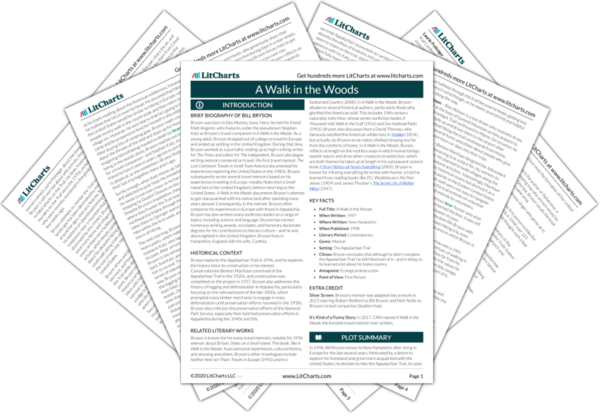Even though Katz and Bryson still annoy each other, they’ve started to embody a chummy camaraderie. Katz immediately senses that Bob is irritating Bryson, and his cutting comment shoos Bob away. Bryson has read a lot about the views in the Smokies, but he can’t see any—the rain obscures the entire surrounding area. Once again, the promise of exploration and adventure falls short, and the experience fails to hit the mark for Bryson.
